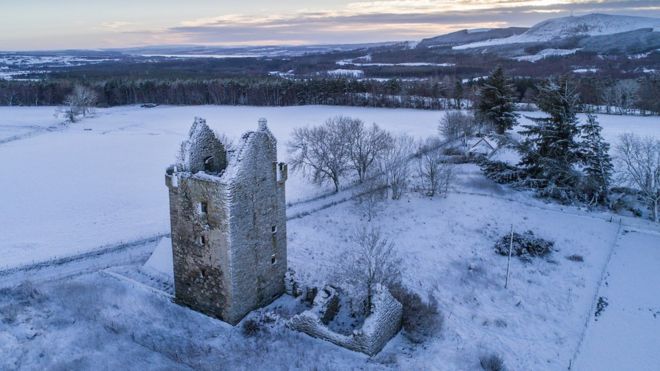Fight to save historic Fairburn Tower associated with legendary Scottish mystic
Fairburn Tower stands near to the village Muir of Ord (Scottish Gaelic: Am Blàr Dubh) in the Highlands of Scotland. The building was built in 1545 by Murdo Mackenzie on land left to him by King James V of Scotland. The building is now in a very fragile state and could be at risk of collapse. Now there are plans by The Landmark Trust, a building conservation charity, to restore the tower house and bring it back into use.
The Mackenzies had backed James Stuart, during the Jacobite rebellion in 1715. After his defeat, the estate was confiscated by the Crown. The tower was later restored by Laird Alexander Mackenzie In 1745, but he refused to to fight against the forces of Charles Edward Stuart in the last Jacobite rebellion of 1745-46. This resulted in the tower being seized after the defeat of Charles at the Battle of Culloden and it fell into ruin after this. The Landmark Trust is trying to raise £800,000 towards the cost of conserving Fairburn Tower so it can provide holiday accommodation. However, in doing so it is also challenging an ancient prophecy that the tower would be uninhabited.
The tower is associated with the legendary 17th century mystic Kenneth Mackenzie, also known in Scottish Gaelic as Coinneach Odhar, but more famously as The Brahan Seer. In legend he was said to be a predictor of the future and to have used an Adder stone, a stone with a hole in the middle, to see his visions of the future. He is said to have prophesied that the Mackenzies of Fairburn would lose all their possessions. He also saw that the castle would become uninhabited, but that a cow would give birth to a calf in the highest chamber of the tower. When the building was being used to store hay in 1851, a cow is said to have walked inside the tower, climbed to the top of the building where it gave birth to a calf.






